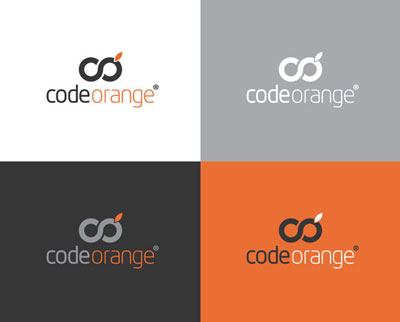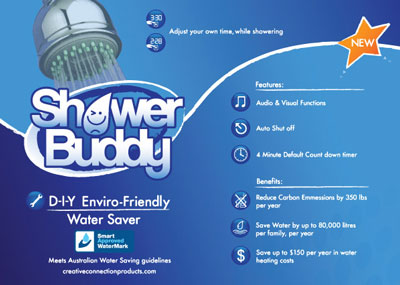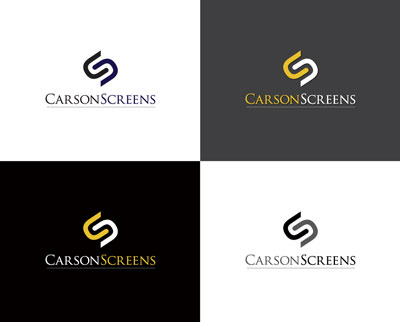Key Takeaways
- Participating in design contests like those on 99designs.com has been a major stepping stone for Richard Scott, helping him transition from traditional employment to freelancing and establishing a steady income stream.
- Richard credits design contests for not only providing financial stability but also for enhancing his visibility and building a reliable client base through follow-up work from contest clients.
- Despite criticism from some quarters regarding design contests devaluing the design industry, Richard sees them as a valuable platform for both new and experienced designers to gain exposure, test their skills, and receive feedback.
- The competitive nature of design contests drives Richard to produce better work, as competing against other talented designers pushes him to be more creative and innovative.
- Richard’s approach to design contests has evolved from participating in many simultaneously to selecting a few that best match his skills and interests, allowing for focused and high-quality submissions.
- The flexibility and freedom of freelancing through design contests align perfectly with Richard’s desire for autonomy, allowing him to structure his workday around his personal preferences and commitments.
The topic of design contests is a polarizing one. Those who are against them are really against them, maintaining that they exploit designers and devalue the design industry. The NO!SPEC mantra has been adopted as a code of conduct by graphic design associations like AGDA and AIGA, and those who agree with this philosophy consider entering a design contest to be entirely unprofessional and just plain wrong.
Finding supporters of design contests is not hard though. Naturally, contest holders love them because of the economical savings and the variety of solutions they’ll be presented with when crowdsourcing a task like the design of a logo, a web site or a business card.
But what about the designers who enter these contests? Matthew Magain spoke with Richard Scott, a designer who makes the majority of his living from 99designs.com, about freelancing, why he chooses to ignore the pleas of the NO!SPEC crowd — and how he’s a better designer because of it.
Disclosure: 99designs was founded by a team of former SitePointers. We still let them use our espresso machine every now and then.
SitePoint: Thanks for taking the time to talk to us Richard. First up, tell us a bit about yourself, and how you got into design.
I was born in Australia, but I grew up in England. I always loved art and design, so I knew early on that it was where I wanted to focus. After two years of college, I specialized in graphic design and photography, and did a three-year degree at Falmouth College of Arts in Cornwall. I was fortunate enough to have had brilliant teachers who really inspired me; I just loved it.
But I never wanted to work for anyone else. Never.
SP: Really? Even from when you were really young?
Well, since forever, really. I’ve never wanted to work for anybody, I always wanted to be my own boss. I mean I did get a few design jobs, working in studios, but it just wasn’t me. Starting from the bottom, working your way up, that kind of stuff. I knew I could do more, and faster.
I got a bit disillusioned with design and did some travel for a while. When I moved to Melbourne and applied for a few jobs, I started thinking, “Why am I wasting my time? I’d rather be finding my own clients than trying to find a better job.”
So I decided to set up from home. I didn’t have a plan or anything, but I somehow stumbled upon 99designs.com.
SP: What was your motivation for entering your first contest?
I just wanted to get back into design after taking some time off to travel. I knew I was good enough to compete, but basically I just figured I had nothing to lose.
After I won a few contests early on, I thought, “Hmm, I could make a bit of money here. Maybe I could actually make my business out of it.” So I just decided to dedicate myself to focusing on these design contests, thinking that if I used them to make a few contacts, then I might get follow-up work as well.
And that’s exactly what happened — everyone who I did work for loved my designs, and wanted me to do follow-up work rather than holding another contest. It was just too easy, and I could see that there was potential for establishing a good client base through this channel.

SP: What’s your business model, then? And where does 99designs fit in?
Basically I use 99designs.com as a stepping-stone to get contacts. And for that it has honestly been just amazing. My income, literally just from winning contests, basically pays all my bills. Add to that all the follow-up work that comes in, and you’re rockin’. It’s as simple as that.
SP: So 99designs.com is like your marketing department?
Honestly, it’s everything, really. Now that designers can list their portfolios, it’s amazing. I don’t even need to market anything anymore. That’s the beauty of it as well. The site is attracting such a huge audience, so now the whole world is looking at it!
I don’t even need to advertise anymore. I mean, when I went out on my own, I didn’t really know how I was going to find work. And basically this has been my lifesaver. It’s just been great. I know that’s an unpopular viewpoint to take among some designers, because of the whole NO!SPEC thing, right?
SP: It’s definitely something that people are passionate about.
Here’s my take on it: I don’t believe it’s black and white. There are obviously plenty of people who will argue for and against both sides until the cows come home, and that will never change.
But for me personally, not wanting to work for anybody, it suits me perfectly… I just didn’t want to climb the career ladder — starting with making coffees for everybody and working my way up. I did that once, and I hated it. I just wanted to be my own man, do my own thing.
With 99designs.com, I choose what I want to do. Sure, the rewards might not be guaranteed, because you’ve got to win. But if you’ve got ideas and skills, then you will win! So it’s the perfect platform for someone who wants to choose their projects and is prepared to have a go.
SP: How would you describe your style?
My style is generally quite clean and minimalist. When I’m creating a logo, I always like to embed a clever little idea into the design — even if it’s just a word mark, or an icon, it’s got to have some kind of little creative element, some extra layer of meaning.
Usually when there’s a brief, all the information that you need to produce that final solution is there – it’s just how well you interpret it. I think I’m quite good at interpreting the brief, and that’s one thing I think I do quite well. Some people might enter a heap of contests, and win nothing. For those designers, I would say that winning a design contest is a lot to do with how you interpret the brief and how you apply your creativity.

SP: What percentage of your time is spent on entering contests, as compared to doing follow-up work as a result of winning a contest?
At first it was just all contests. I decided that I’d just churn through them, working as hard as I could to win as many contests as I could. My plan was just to get as much prize money as I could early on, so I could be comfortable and hopefully set myself up for more follow-up work.
Now I don’t really do that any more. Back then I would enter 10, maybe 15 contests at a time to get my name out there and build a portfolio. Now, it’s probably about 50/50, I’d say.
The trouble is that the contests are so addictive.
SP: Really? Why is that?
It’s true, it really is addictive. I guarantee you a lot of the other designers who compete in contests would say the same thing.
Just knowing when you see a brief that you have a killer idea… it’s difficult to ignore. As soon as I see one of those briefs, I think “Bang! I know I could win that!” and away you go.
I have to confess that quite often the follow-up work is not as exciting. If I’ve been given a brief, and it’s just for me… there’s no thrill of the win, you know? Of course, it’s a safer option, because you know you’re going to get paid. But it’s not really about the money for me. It’s become more about the competition, and the excitement of competing against so many other talented designers.
SP: Are you saying that competing against other designers drives you to create a better design?
Yeah, definitely. A lot of the time I see something in the word, and I know “Yep, I can win that” before anyone else has even entered. Often what happens is that I’m working on a client project that’s outside of 99designs, but I’m always keeping my eye on my browser window, which is open in the corner of the screen. So even though I should be focused on work that I’m actually going to get paid for, I’m still checking whether any new contests have been launched. Like I said, it’s addictive!
I know that work should be the most important, but it often doesn’t seem to work out like that, because 99designs is an addiction. And I’m sure other designers who enter contests would agree with me.
Of course I manage my own time and work when I want, so there’s no issue with getting that client work done. I know my deadlines, and manage expectations with my clients who understand that there are differences in time zones.
But I’d still say that 99designs is the thing I focus on most, and everything else works around that. I don’t mean to, and my other client work always gets done. That’s just how it works out.
SP: One of the concerns that the NO!SPEC crowd voices is that contests exploit designers and devalue the design industry. What’s your take on that?
Contests sometimes get abandoned, which is annoying. I know the 99designs guys are moving to a new system that forces the contest holder to pay upfront, which will definitely be a good thing (A “guaranteed contests” feature was launched just this week — Ed). And obviously I’d like to see the prizes increase — $100 for a logo is not worth my time, nor is it going to attract any of the better designers, so there probably is a little bit of truth to the suggestion that it devalues design.
But like I said, I don’t think it’s black and white. The benefits are huge — for example, for small businesses. Say Granddad wants to start his own business. He hasn’t got thousands of dollars to pay a design company. But he can run a contest, offer up a few hundred dollars and pick the ideas of the world. The designer gets a win and some money, other designers get some experience and feedback on their work, which contributes to their portfolio, and Granddad gets his logo. Some people just can’t afford to go to big design agencies.
Take a branding agency for example. They might charge a client $200,000 for their entire brand, yeah? And there’s probably a fairly complex, involved process — a lot of back-and-forthing, a lot of involvement of the client. There will always be a place for those branding agencies. It’s not like they’re not going out of business — it’s not like 99designs is stealing their business. They’re at one end of the spectrum, and at the other end are the examples likewe discussed — Granddad who has started his own business, and open source communities or not-for-profits that don’t have a big branding budget.

SP: Have any contests that you’ve entered been abandoned?
Yeah, it has happened a few times, and the contest holder has probably taken my work. But I think it’s probably unfair to taint the entire system because of a handful of irresponsible contest holders. That’s like saying that the client-designer system is flawed just because you dealt with a bad client who refused to pay.
I just pull all of my entries as soon as a contest has been abandoned. I’m happy to share my knowledge and ideas, but of course I don’t want people ripping off my work. The thing is, though, that I’ve gained heaps of knowledge from other people. That’s the beauty of this system — the sharing and helping each other out. That’s what the whole Internet is about, in my mind.
SP: So even though it’s a competition, the designers who have submitted entries are helping each other?
You may not think that this would occur, but it does! Occasionally I’ve seen comments along the lines “You stole my design” or whatever, but it’s rare — I’ve never really experienced that. More commonly, I’ll get people messaging me saying “Hey, I love what you’ve done – do you have any advice for me?” I love that!
SP: What sort of project is suitable for a designer to be engaged one-on-one, and what sort of project is suitable for a design contest?
I don’t really think it is specific to a type of project – probably more a type of client. That $200,000 branding exercise that we talked about is at one end of the spectrum, but before sites like 99designs.com came along, there was no option at the other end. All those people at the low end or even in the middle or whatever, they had no choice but to go to a design agency and pay thousands – which of course they just wouldn’t do because they couldn’t afford it. They probably created something themselves which looked terrible.
So in that respect, 99designs really is just so beneficial for everybody. So many designers can make a living off it now, you know what I mean? Some designers go crazy, entering a ton of contests at once. I’ve thought about taking a blanket approach, entering 30 at a time and going crazy. But it works better for me if I enter four or five at a time and focus all of my energy into those, as well as doing a bit of side work.
SP: How has your design school training helped you?
A few people have asked me that. I would still recommend that people have a solid grounding in design before jumping into entering contests. Sometimes you might see a few entries, and you can tell that the designer hasn’t understood the basic principles, because their kerning is wrong or their colours might clash.
I’d suggest that those guys would really benefit from some formal training. If they spent a couple of years at design school getting that stuff nailed, get some knowledge about branding, typography, kerning, the fundamentals, and then they’ll be well placed to just let their creativity go.
Of course the contests are a good learning experience, definitely — just look at all the amazing designers in that community. But that experience and design training complement each other, I think.

SP: So what’s a typical day for you?
Life is on my terms now — everything is on my terms, and I love that freedom. It hasn’t been like that until I really embraced the design contests. When I had a 9-5 routine, I’d have to get up at a certain time. Now I get up whenever I want!
So my day basically involves sitting on the computer over breakfast. I’ll check and respond to emails that have come in overnight, for example if I’ve won a contest. Then it’s straight into checking for new contests, reading briefs and designing.
SP: Do you get lonely having your business focused around interacting with people remotely?
I’ve always liked being by myself anyway. I have a couple of clients locally, who I get out and meet now and then, which is good. But probably 90% of my work is contests and clients who I interact with remotely. But I’m not lonely at all, because I’m so passionate about it.
SP: What kind of design process do you follow?
It’s actually quite weird. I used to do the whole spider diagram – you know, drawing and sketching everything out , writing down the name of the company, brainstorming, word association, that sort of thing, to get ideas going. But what I’ve found now with this whole process is that it’s sped up my creativity. These days I just read the brief, see what colours I want, and then just jump straight into Illustrator. No thumbnail sketches or anything — I guess I’ve just done so many of them now, and have enough experience, so I can just shortcut that process.
SP: So what advice would you give aspiring designers who are thinking that they might want to start entering contests?
You’ll never know unless you give it a go — you just have to dive in there.
I’ve been doing it for a few years, and my work has definitely improved in the last six or seven months. I’m prouder of some of the stuff I’ve done recently than ever before. I would definitely put that down to the whole community thing — the knowledge we share, the encouragement and support. Nothing is really original any more, you know what I mean? But you can develop a concept, and move things forward and put your own spin on things, without directly copying. We’re all here to inspire each other.
Richard’s username on 99designs.com is designabot.
Frequently Asked Questions about Richard Scott Design Contests
What makes Richard Scott Design Contests unique compared to other design contests?
Richard Scott Design Contests stand out due to their focus on fostering a community of designers and clients. Unlike other platforms, Richard Scott emphasizes the importance of collaboration and communication between the designer and the client. This approach ensures that the final design is not only aesthetically pleasing but also meets the client’s specific needs and expectations.
How does the contest process work on Richard Scott Design Contests?
The contest process on Richard Scott Design Contests is straightforward. Clients post a brief detailing their design needs. Designers then submit their designs based on the brief. The client reviews the submissions and selects the one that best fits their vision. The winning designer receives the prize money, and the client gets the rights to the design.
What types of design contests can I find on Richard Scott Design Contests?
Richard Scott Design Contests cater to a wide range of design needs. You can find contests for logo design, website design, product packaging, book covers, and much more. This diversity makes it a one-stop-shop for all your design needs.
How are the designers vetted on Richard Scott Design Contests?
Richard Scott Design Contests take the quality of designers seriously. Designers are vetted based on their portfolio, experience, and customer reviews. This rigorous vetting process ensures that only the best and most reliable designers are part of the platform.
Can I communicate with designers during the contest?
Yes, Richard Scott Design Contests encourage communication between clients and designers during the contest. This interaction allows clients to provide feedback and designers to refine their designs, ensuring the final product meets the client’s expectations.
What happens if I don’t like any of the designs submitted?
Richard Scott Design Contests aim to ensure client satisfaction. If you’re not happy with any of the submitted designs, you can request a refund. However, this option is only available before the final round of the contest.
How is the winning design chosen in Richard Scott Design Contests?
The client chooses the winning design in Richard Scott Design Contests. After reviewing all the submissions, the client selects the design that best fits their vision and needs.
What happens after a design is chosen?
Once a design is chosen, the designer receives the prize money, and the client gets the rights to the design. The client and designer can continue to work together if further modifications are needed.
How much does it cost to host a contest on Richard Scott Design Contests?
The cost to host a contest on Richard Scott Design Contests varies depending on the design category and the prize money. However, the platform is committed to providing affordable and competitive pricing.
Can I participate in Richard Scott Design Contests if I’m not a professional designer?
Yes, Richard Scott Design Contests are open to everyone, regardless of their design experience. The platform believes in nurturing talent and providing opportunities for everyone to showcase their creativity.
Matthew Magain is a UX designer with over 15 years of experience creating exceptional digital experiences for companies such as IBM, Australia Post, and sitepoint.com. He is currently the Chief Doodler at Sketch Group, Co-founder of UX Mastery, and recently co-authored Everyday UX, an inspiring collection of interviews with some of the best UX Designers in the world. Matthew is also the creator of Charlie Weatherburn and the Flying Machine.









